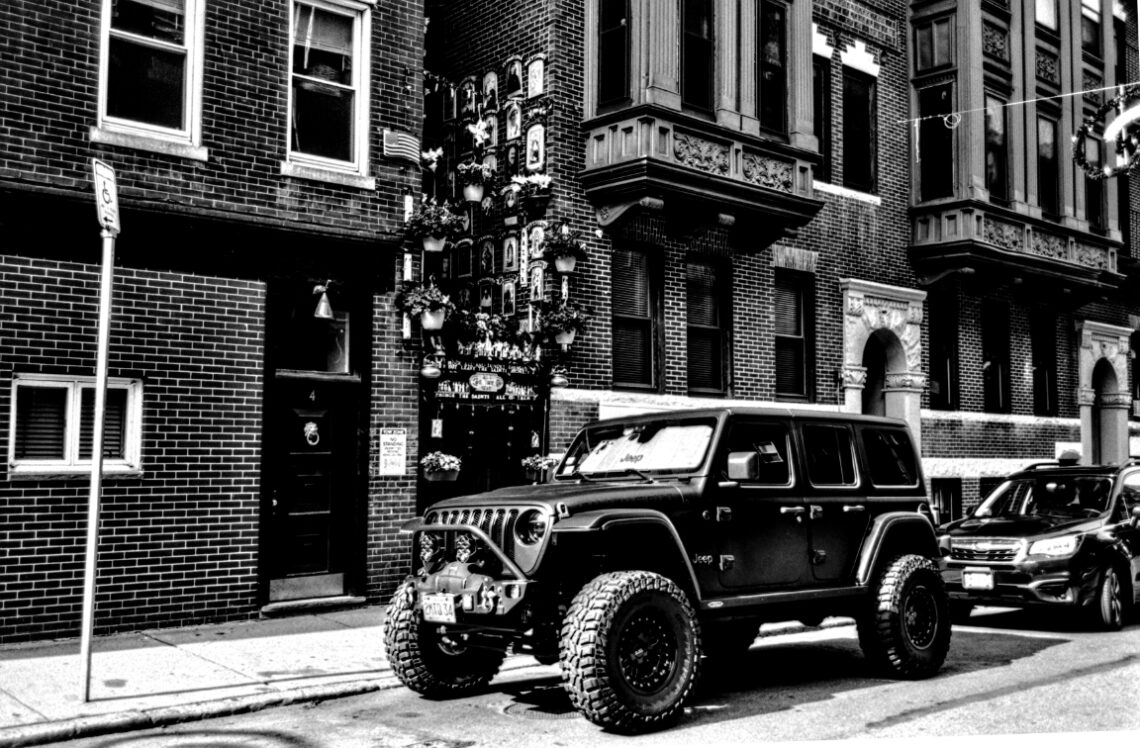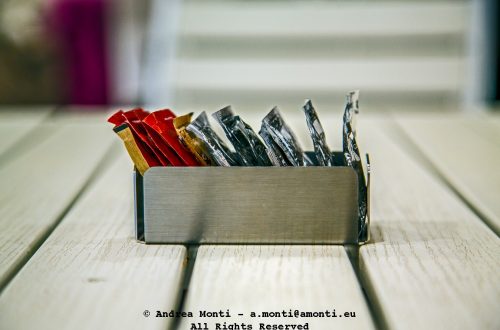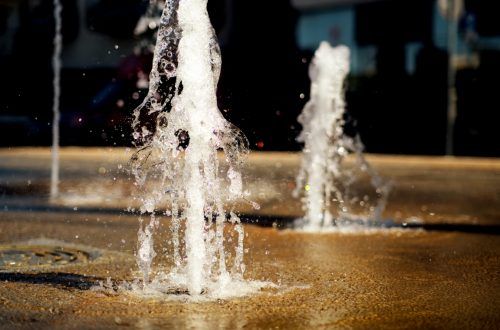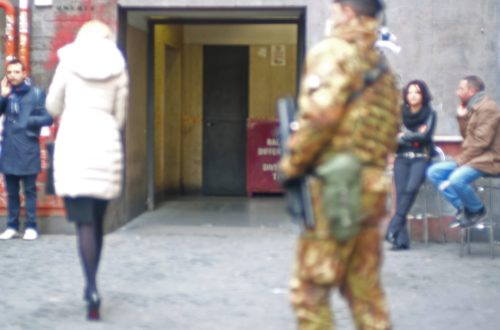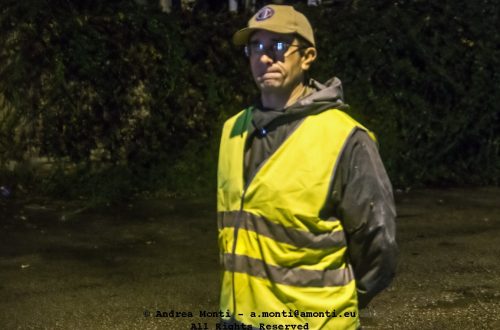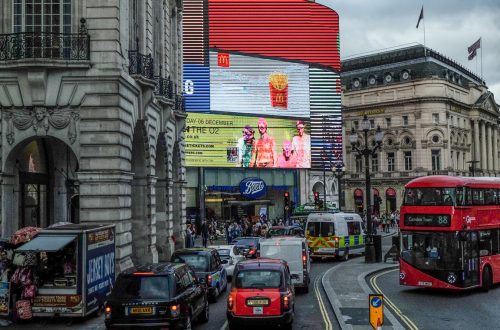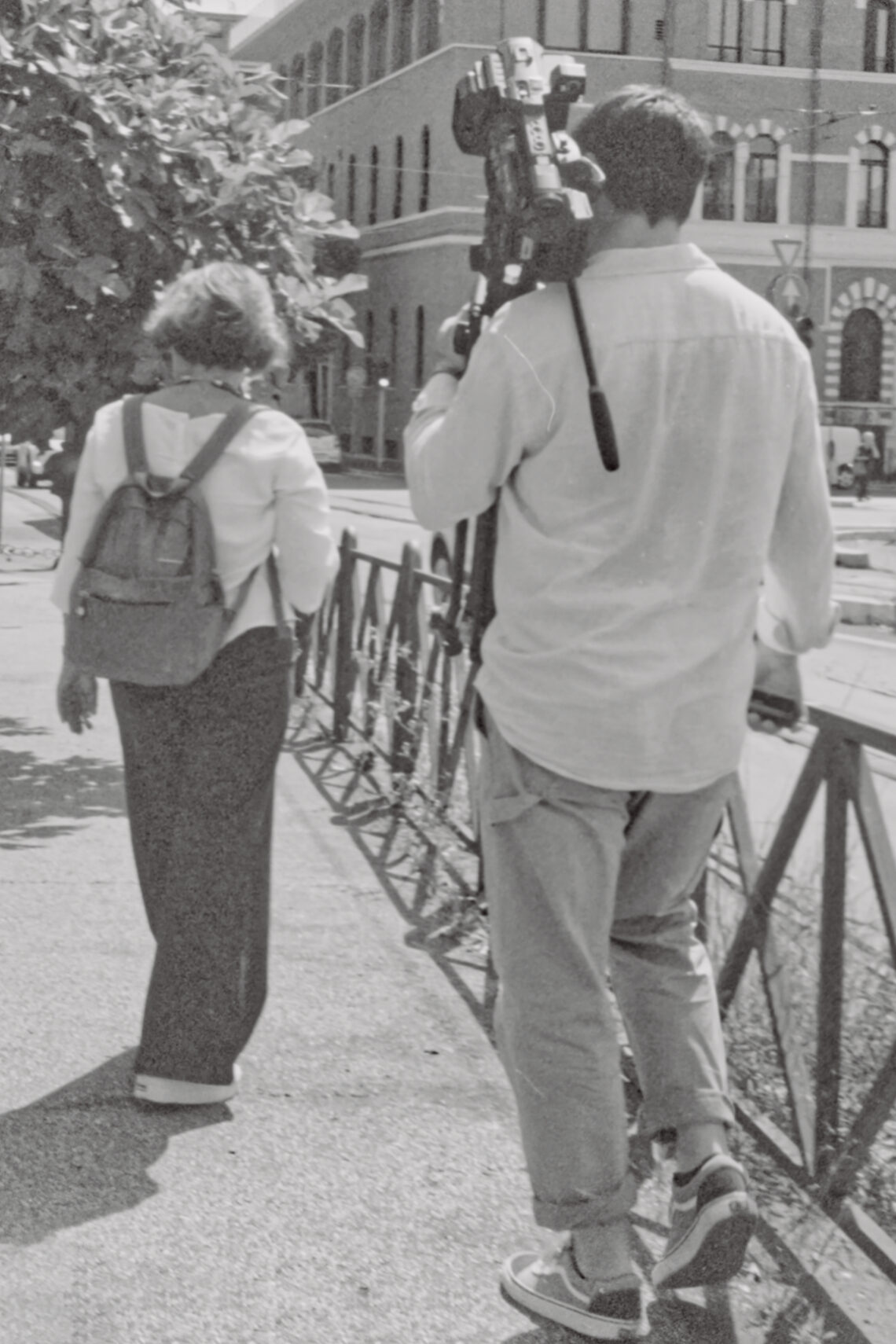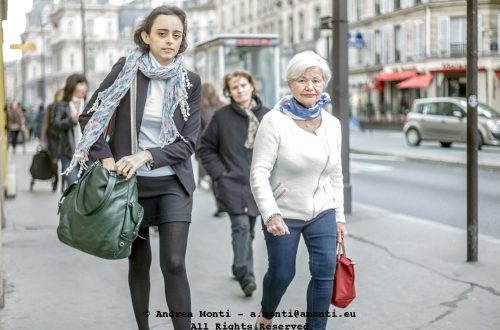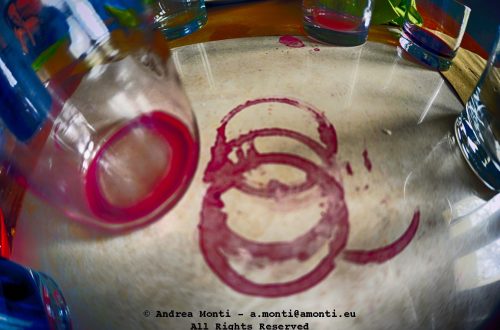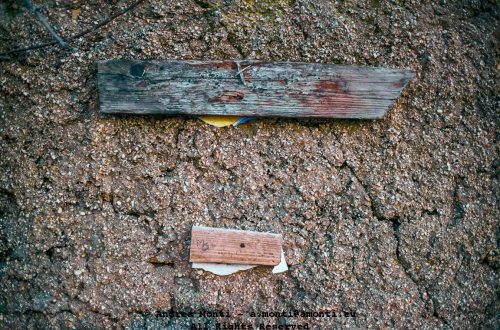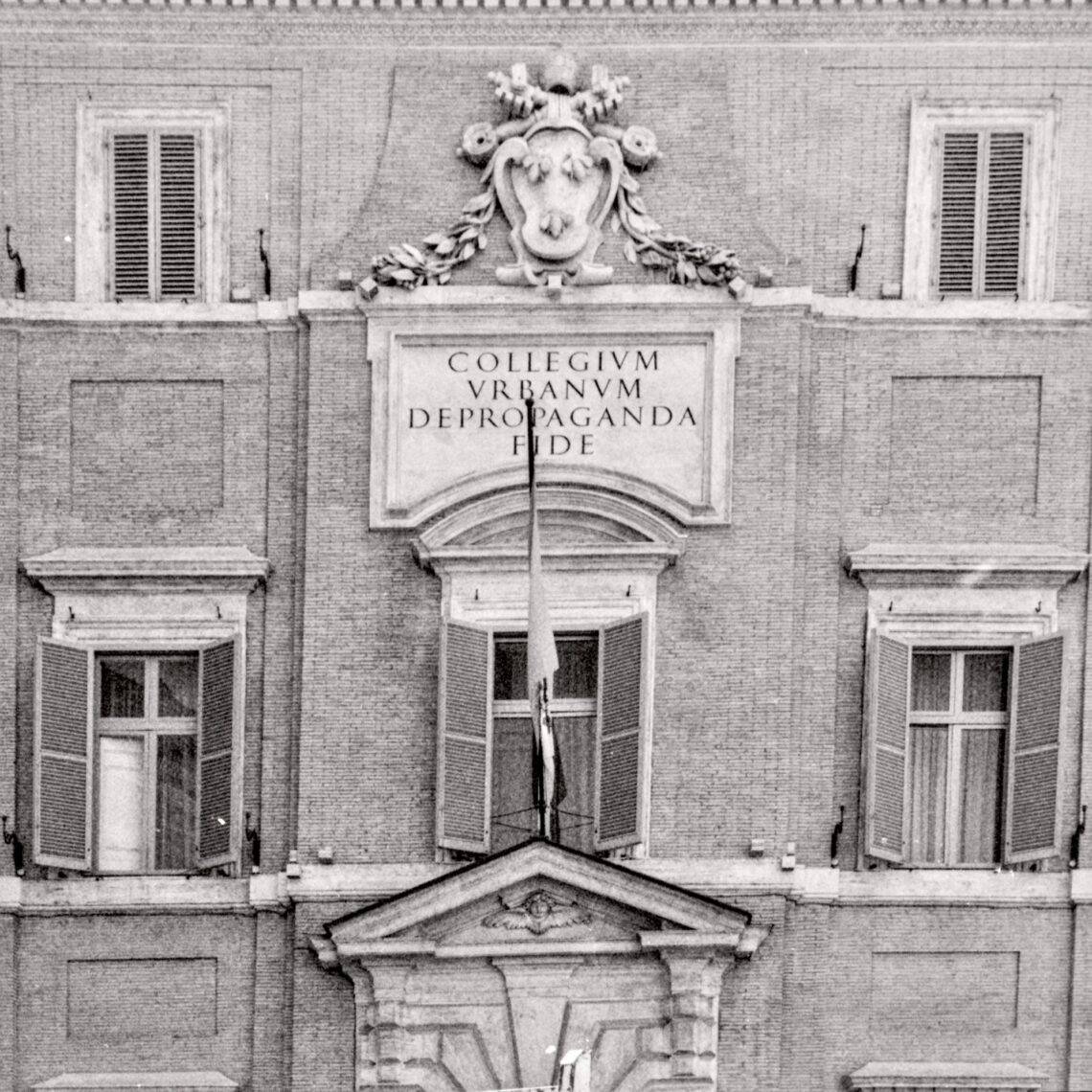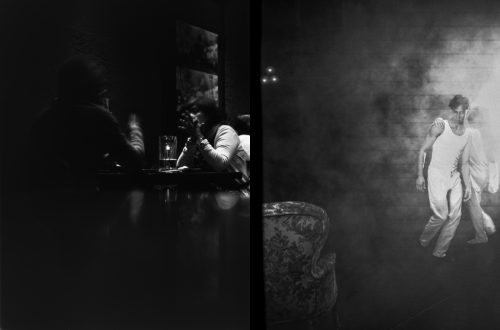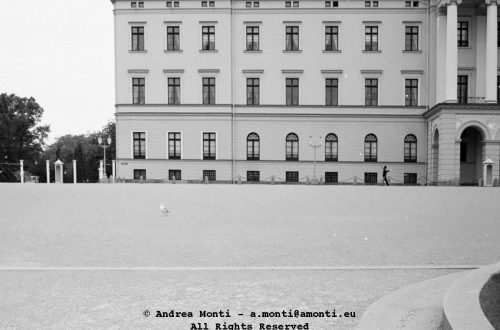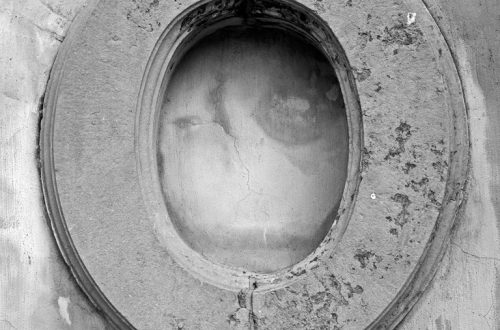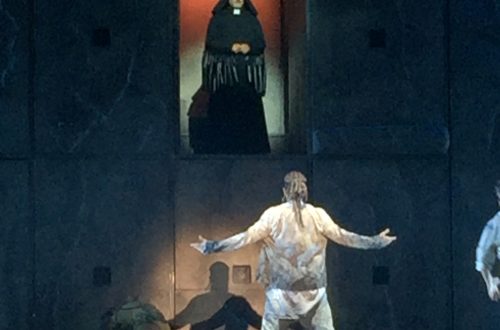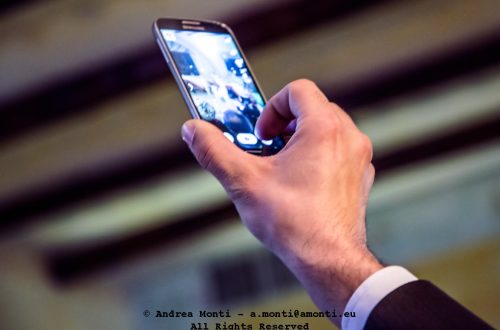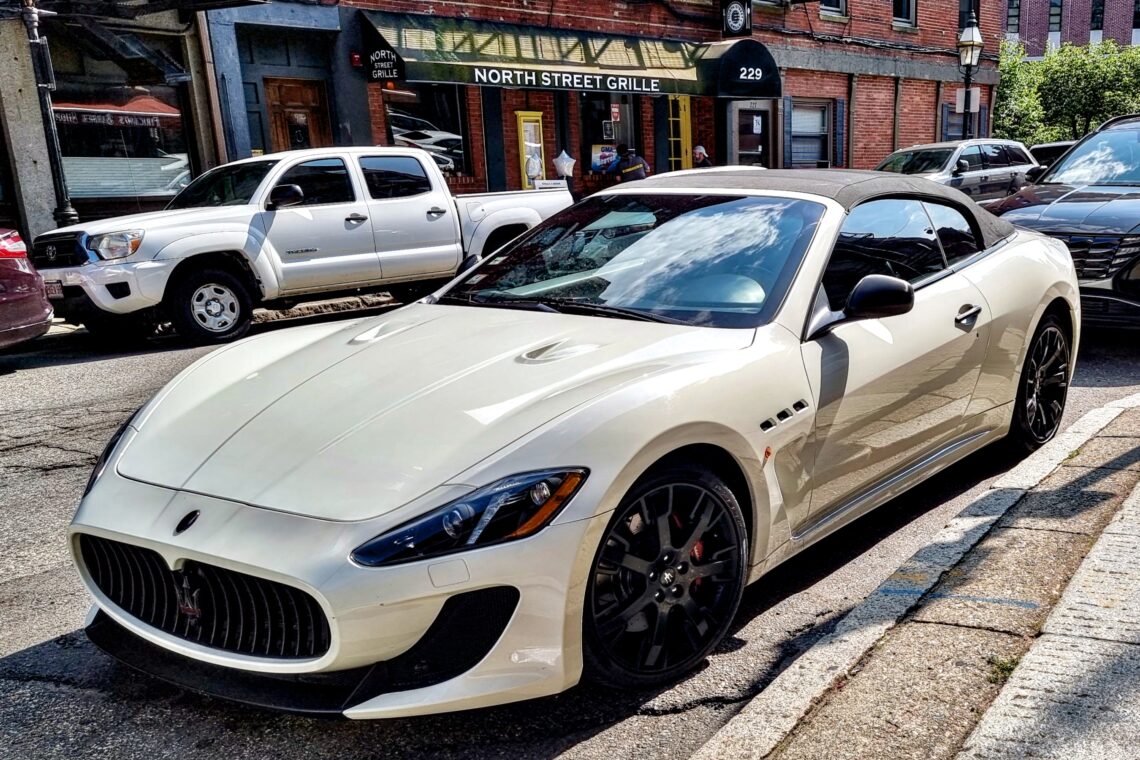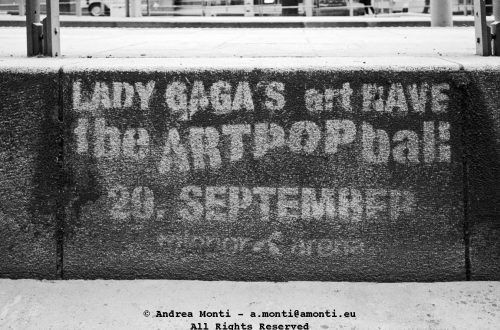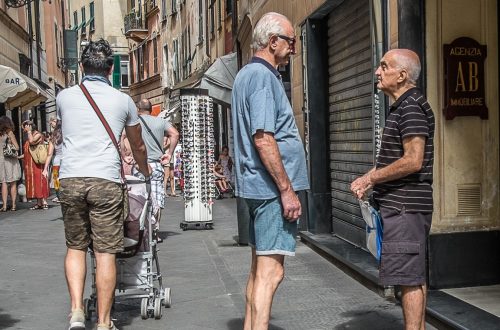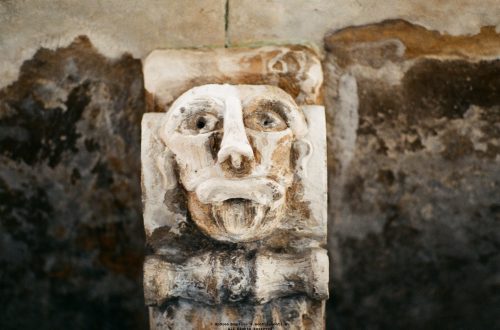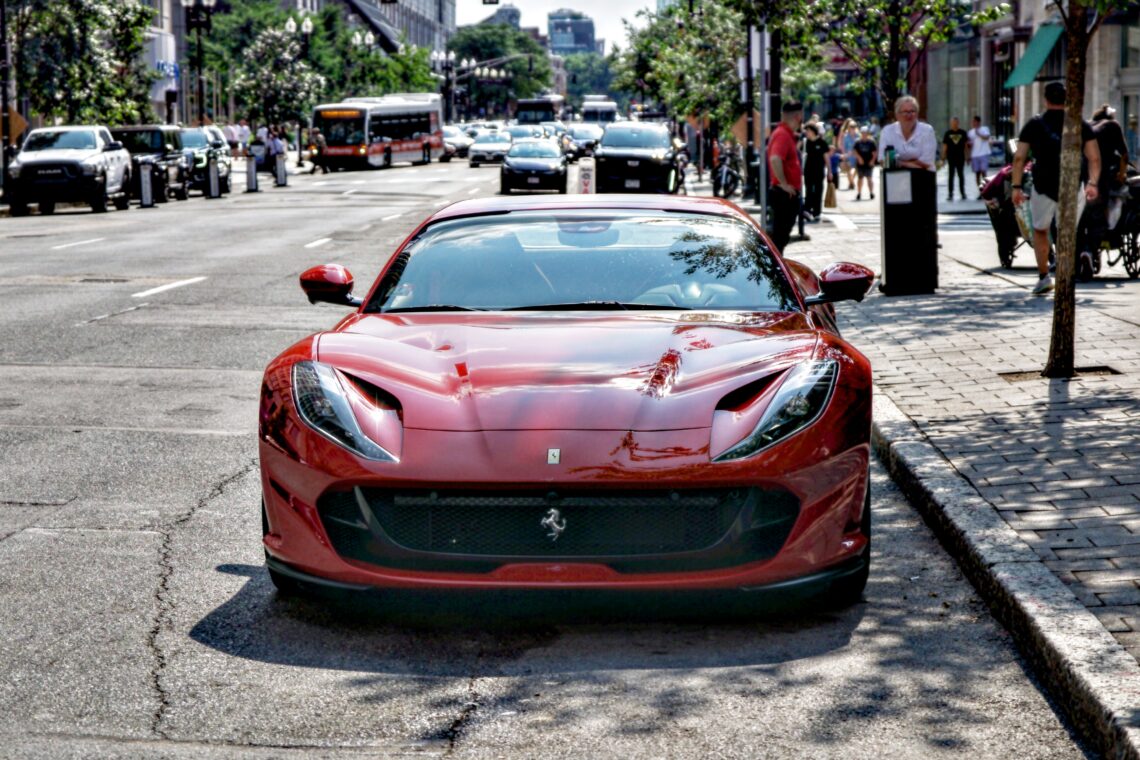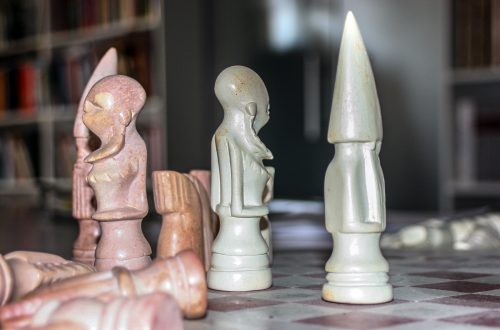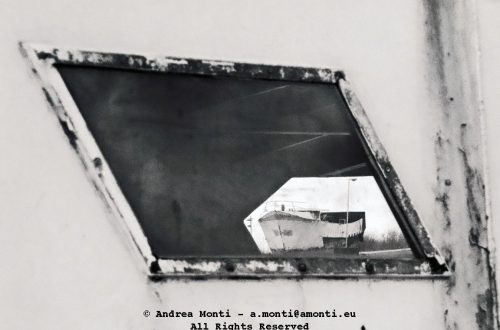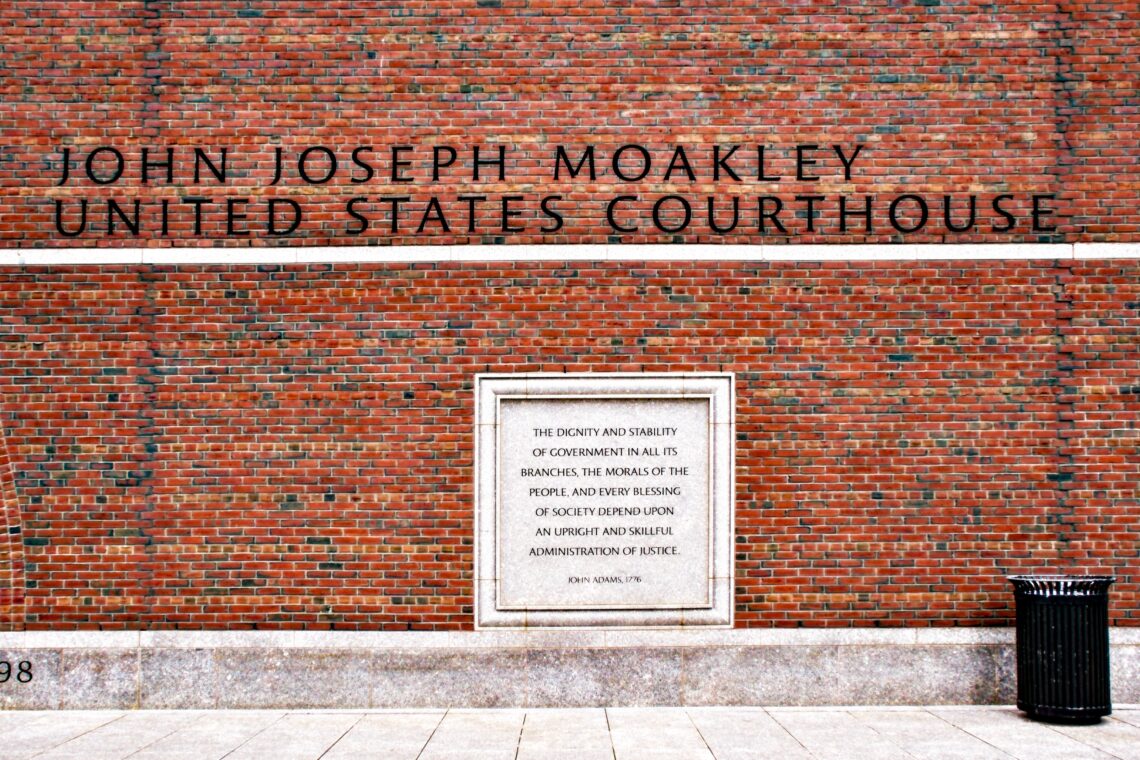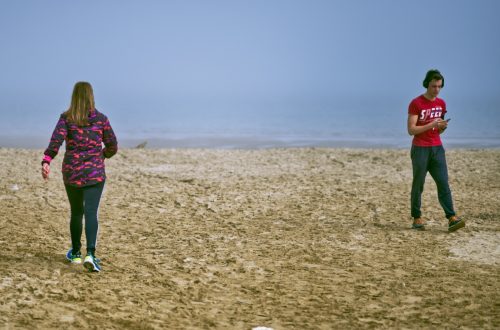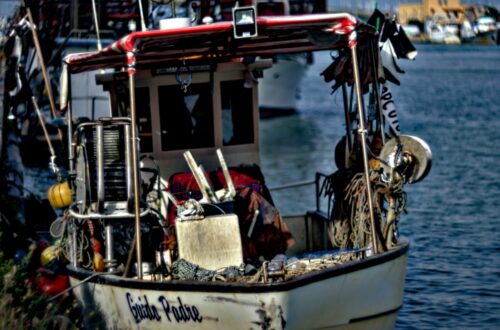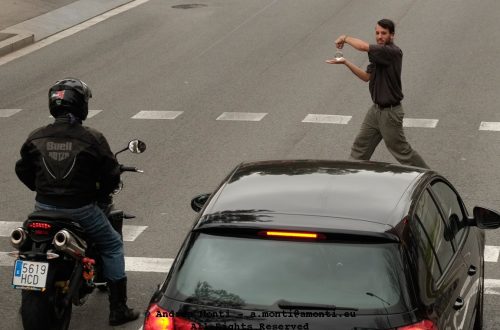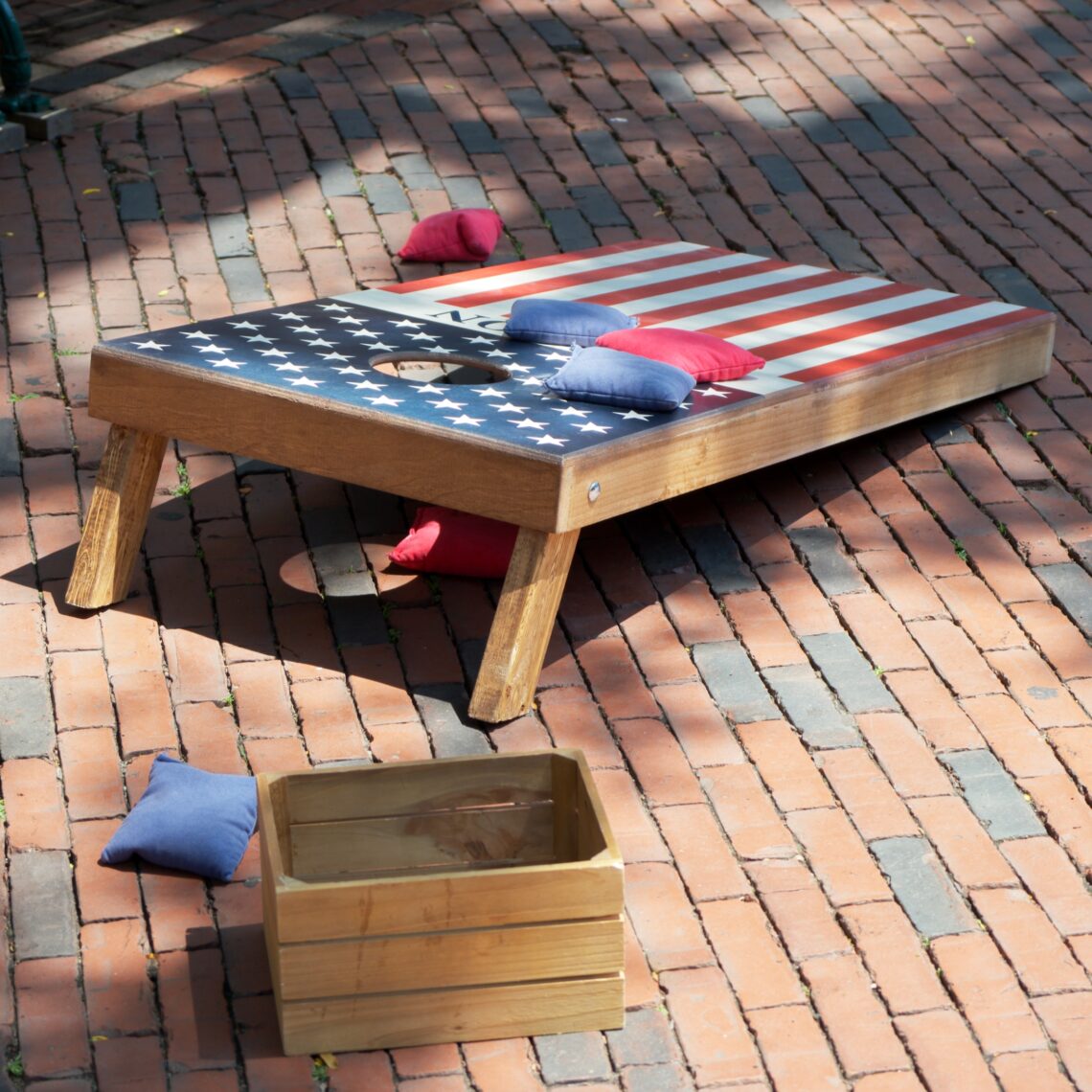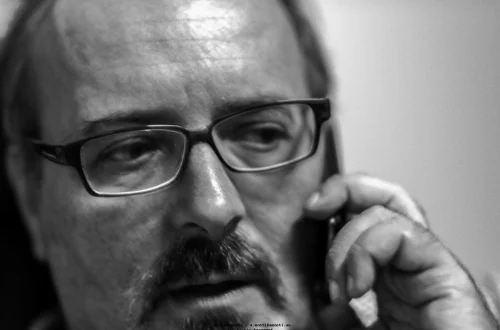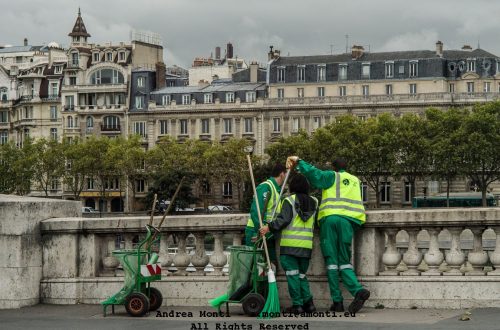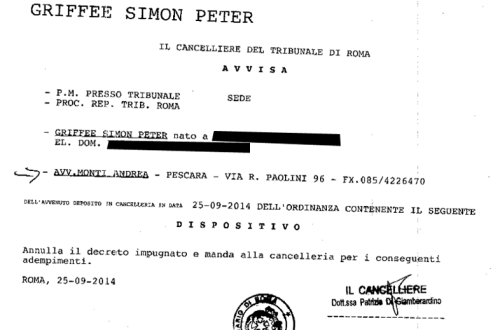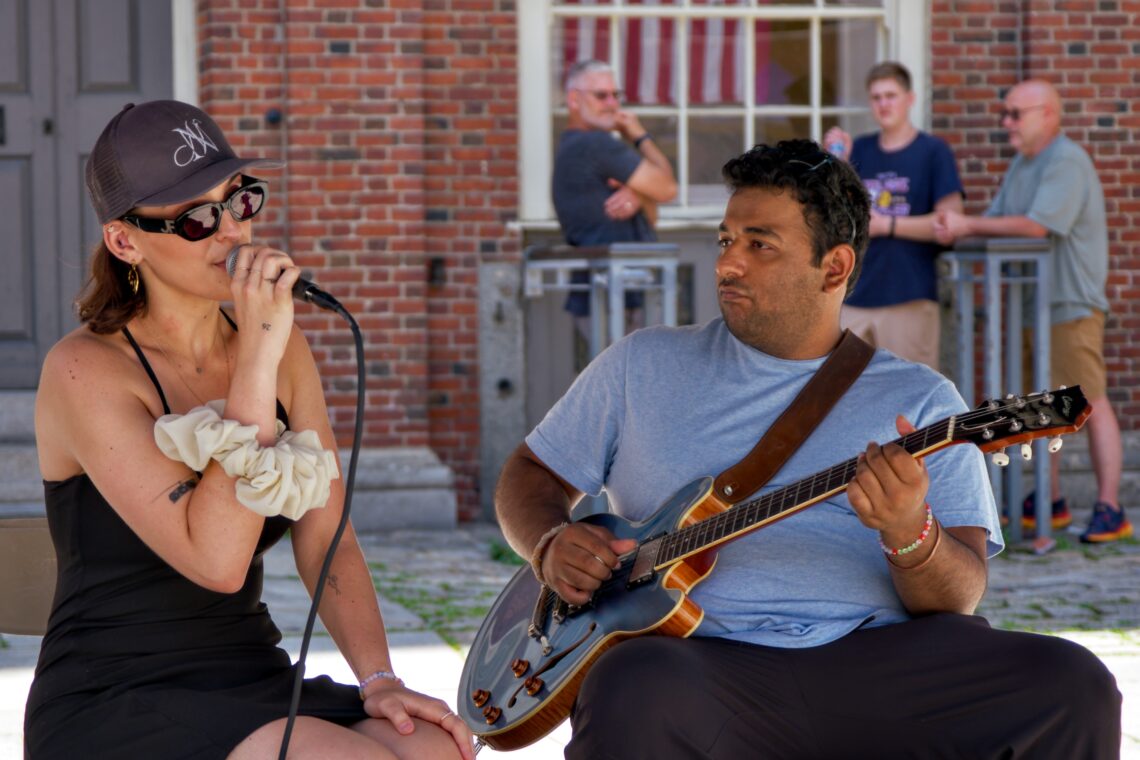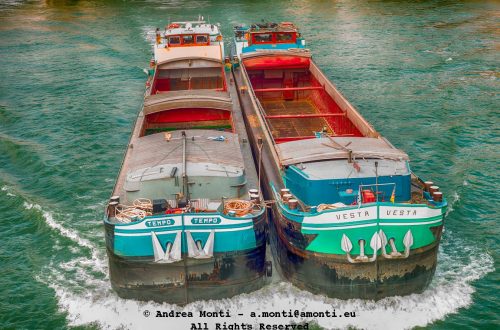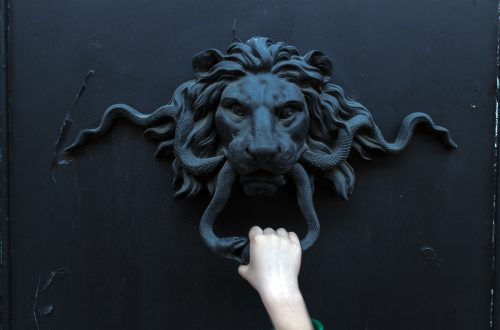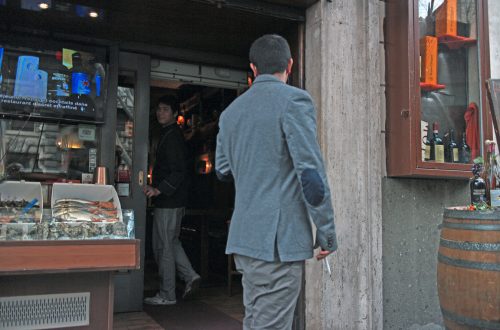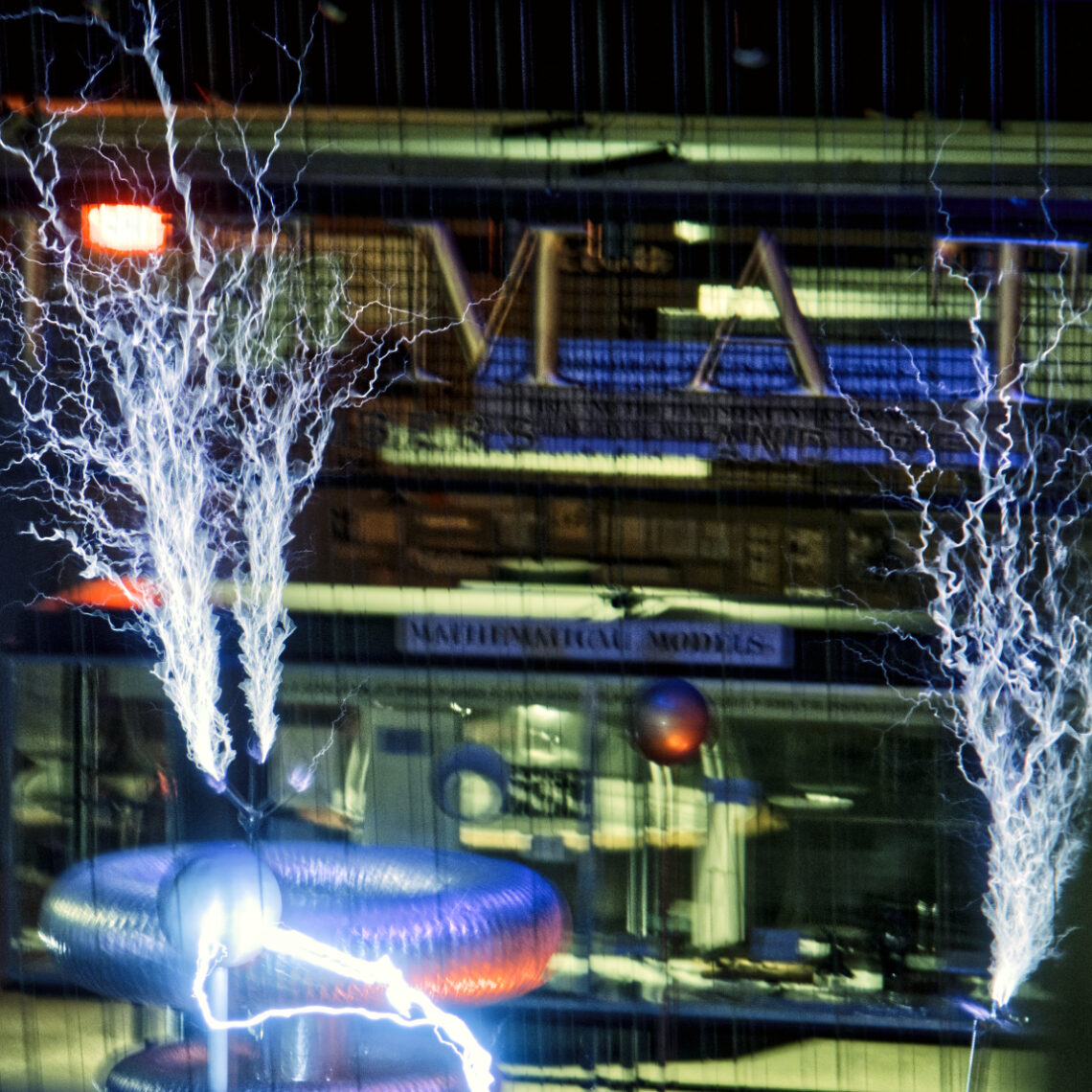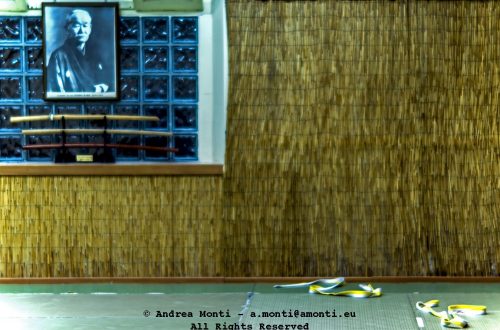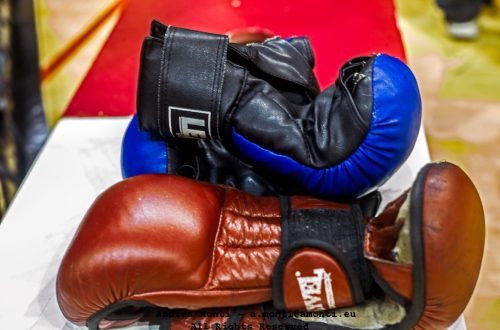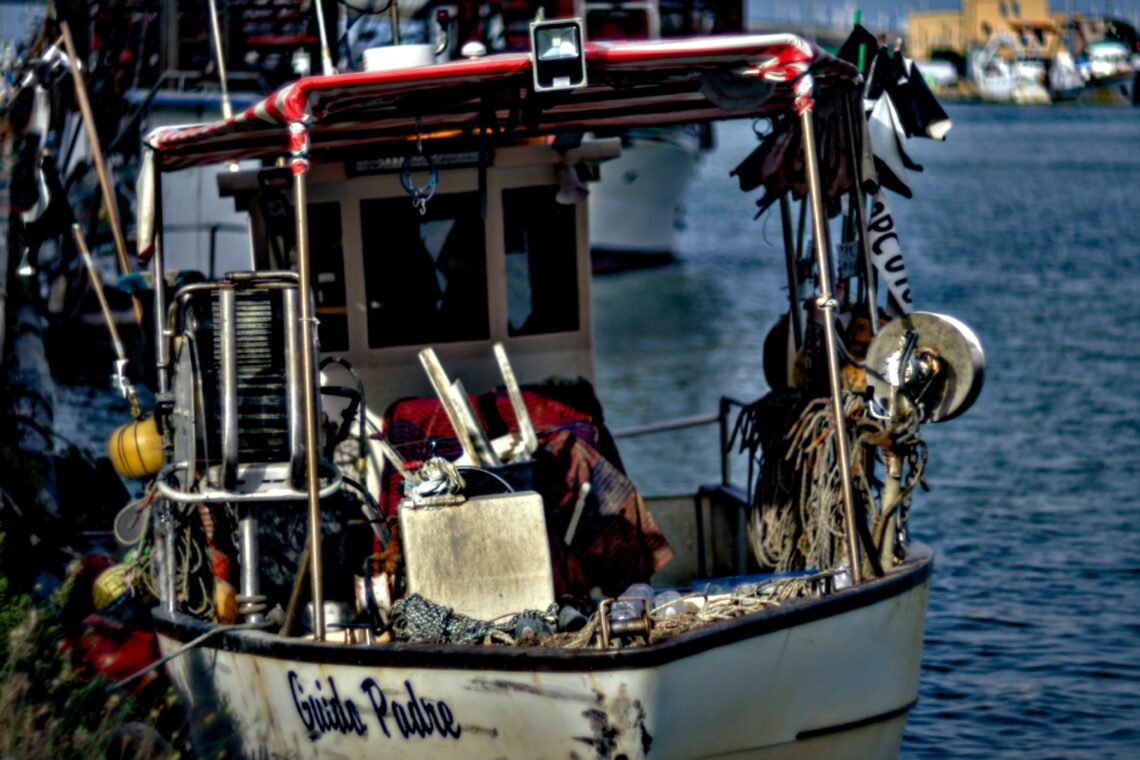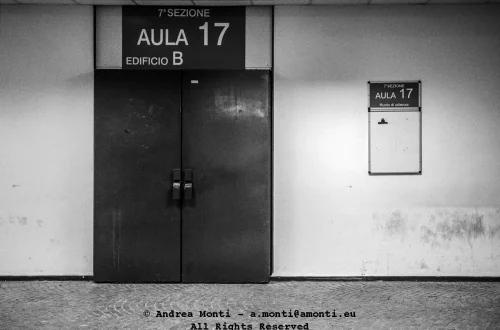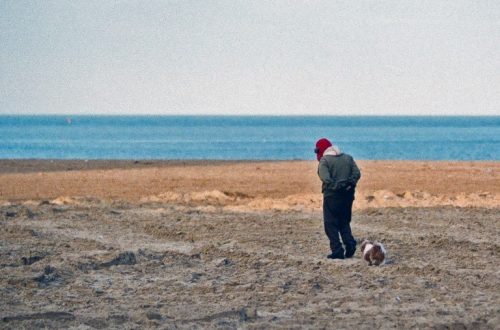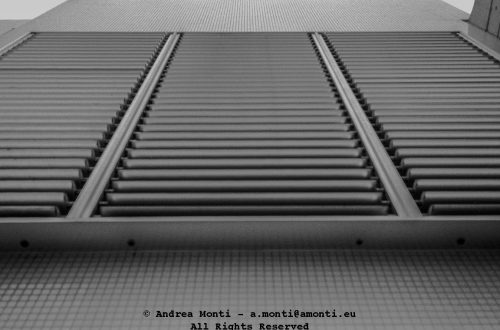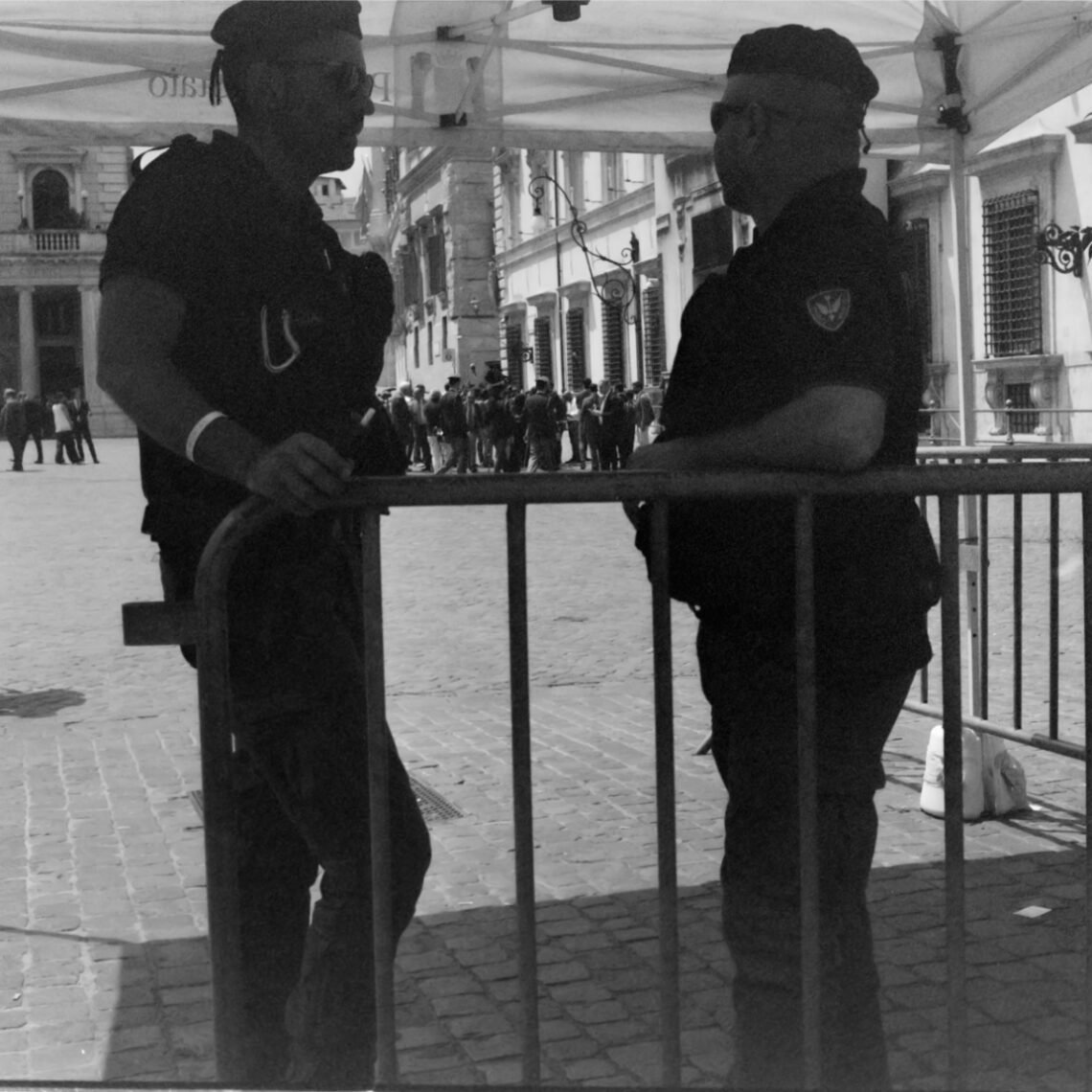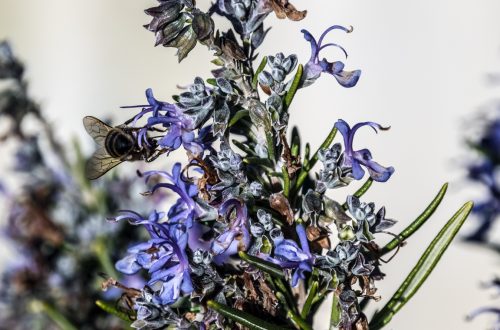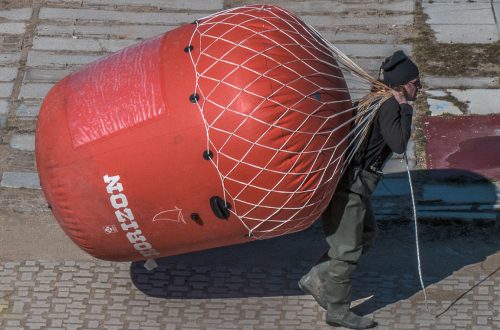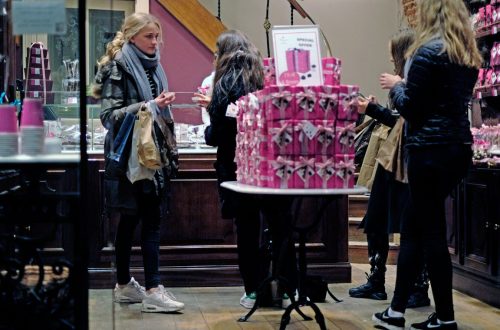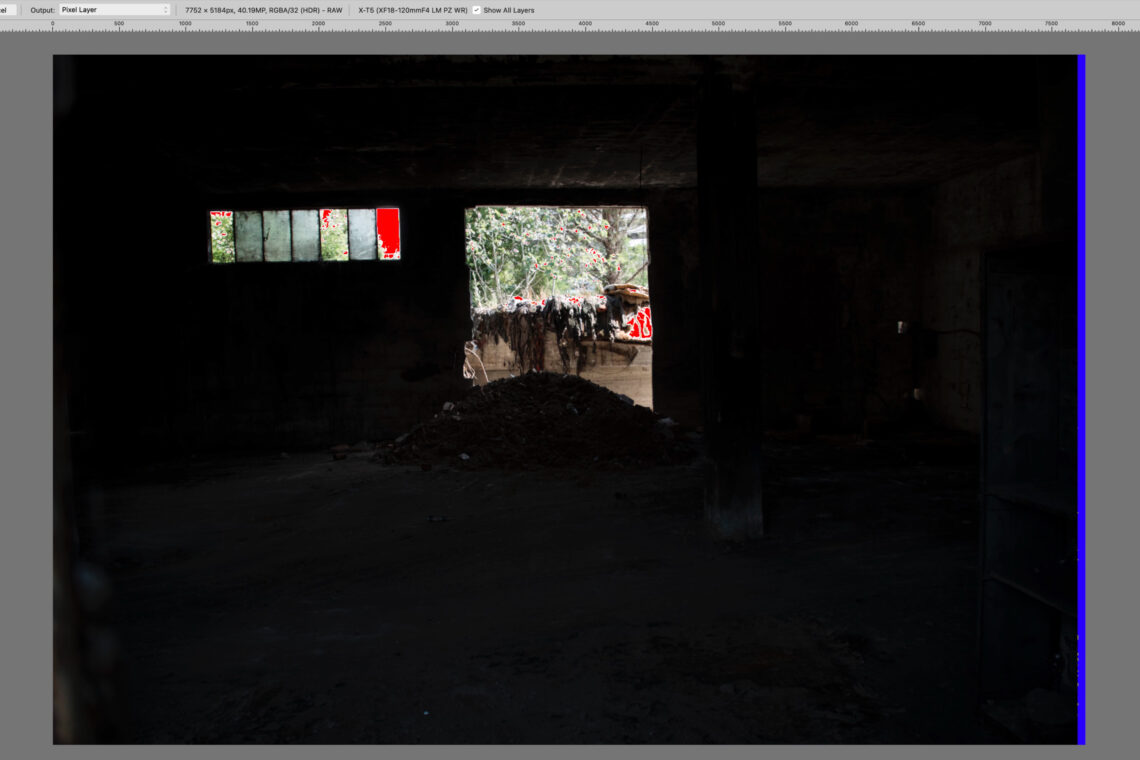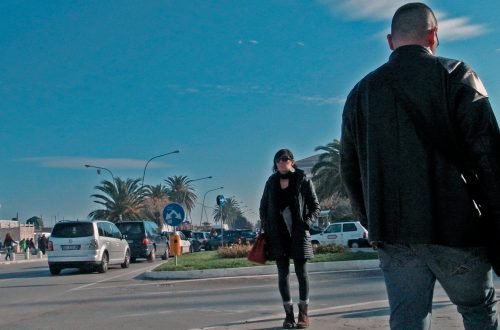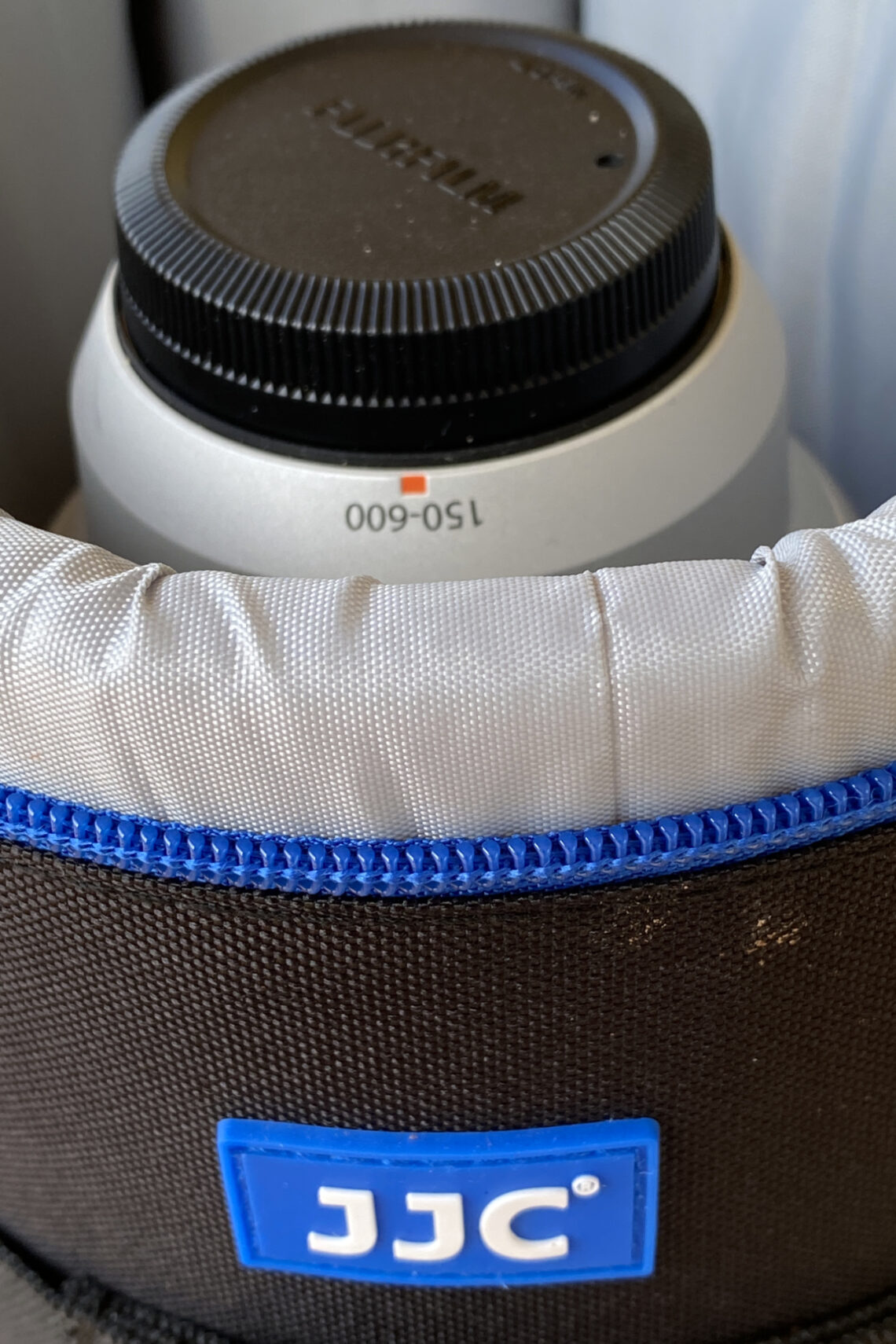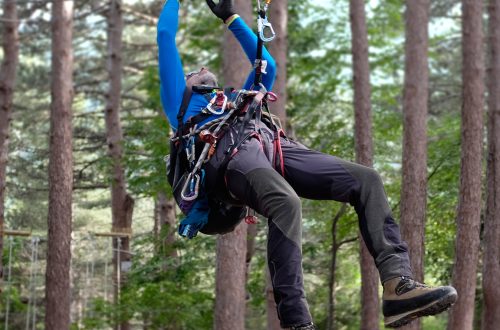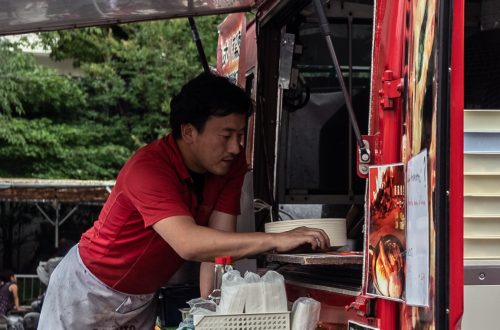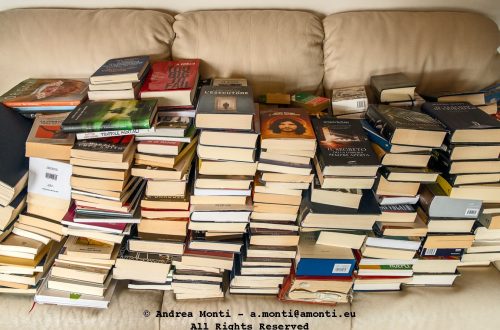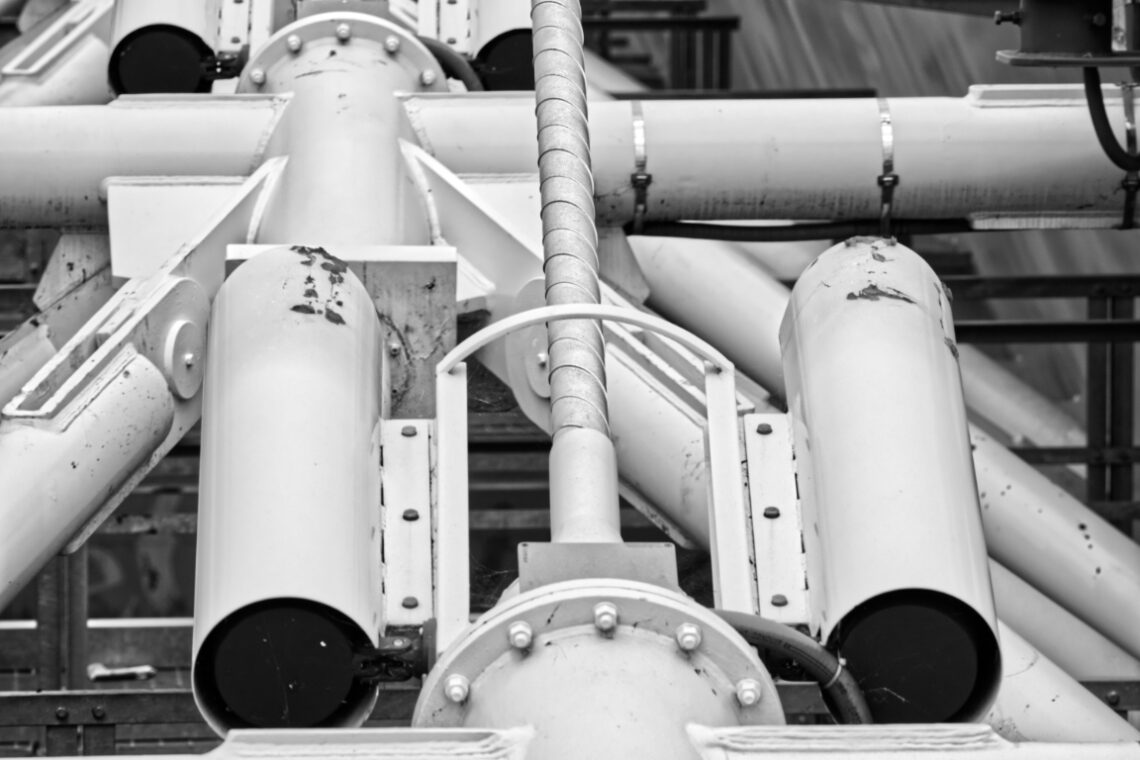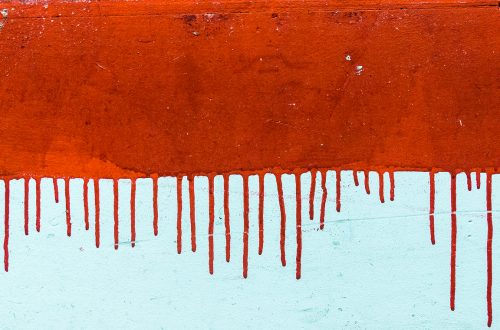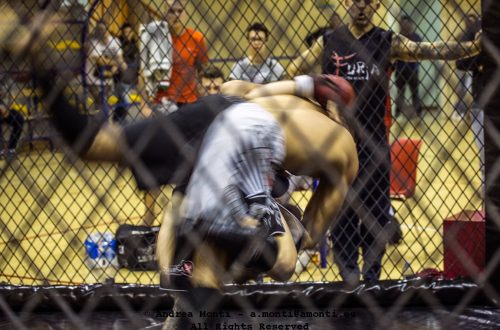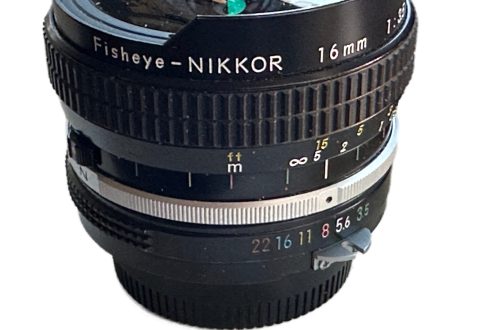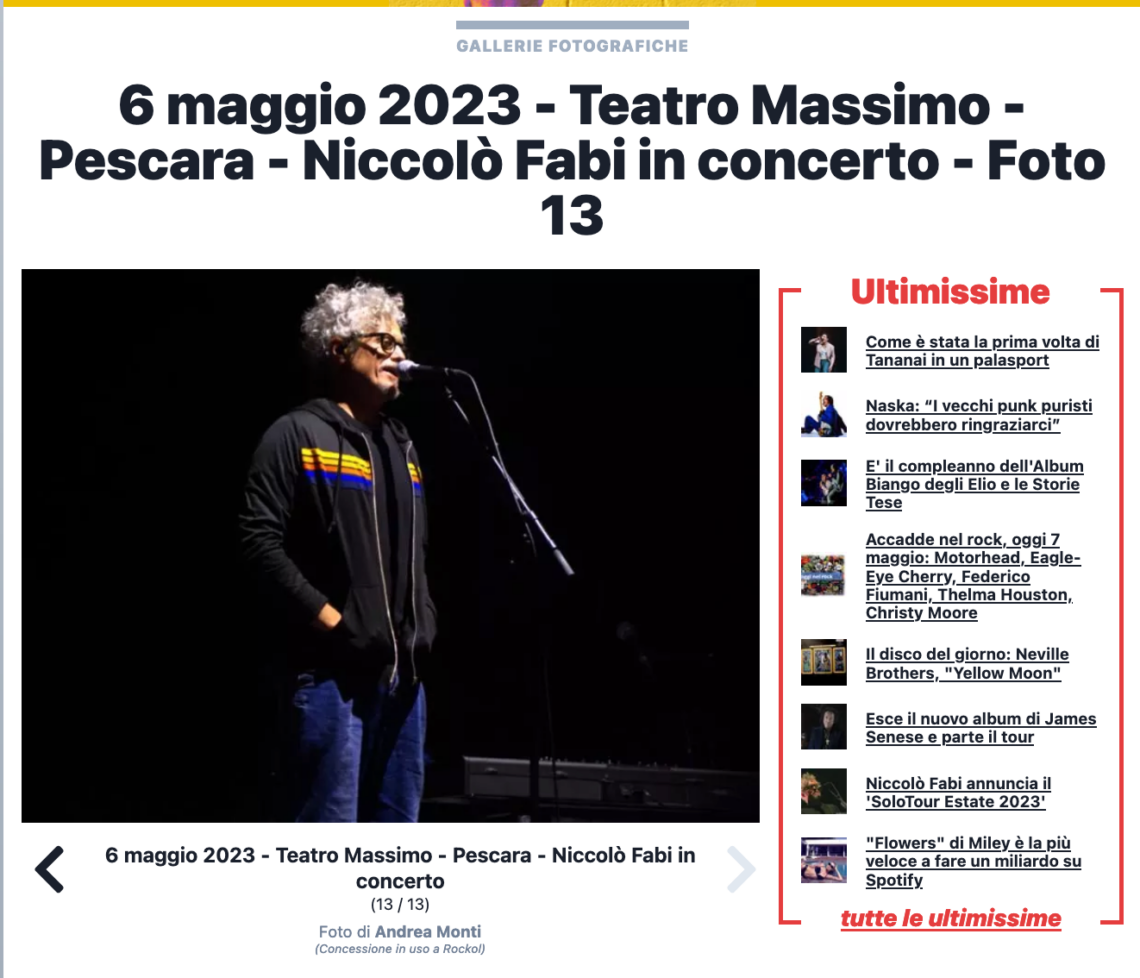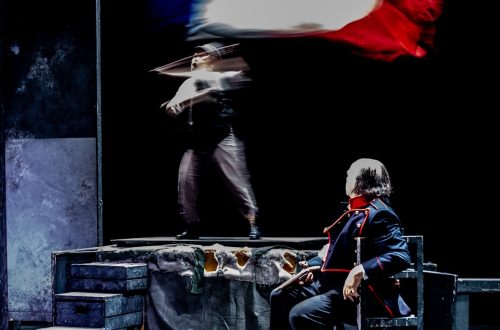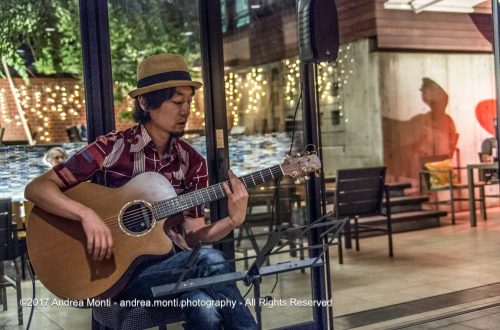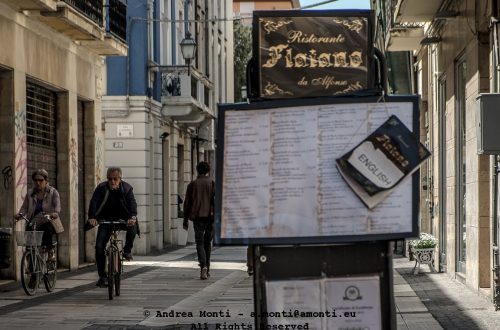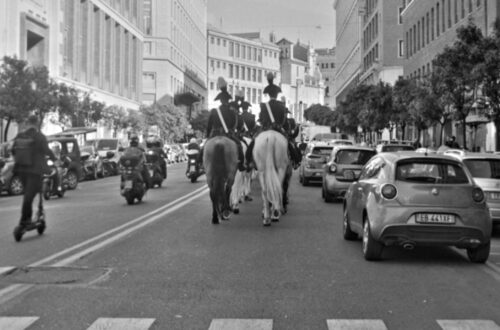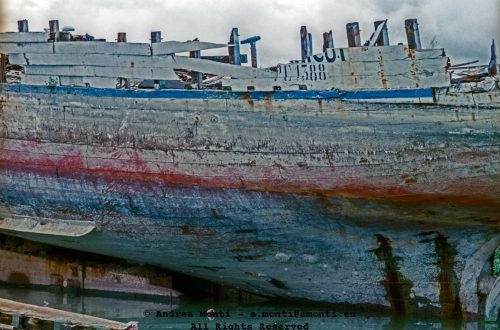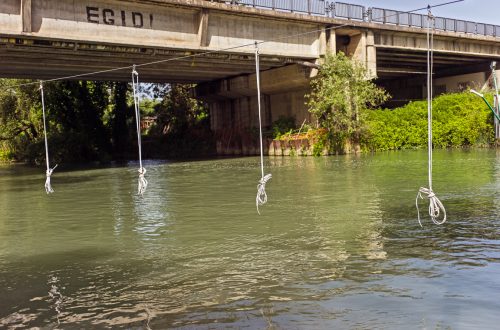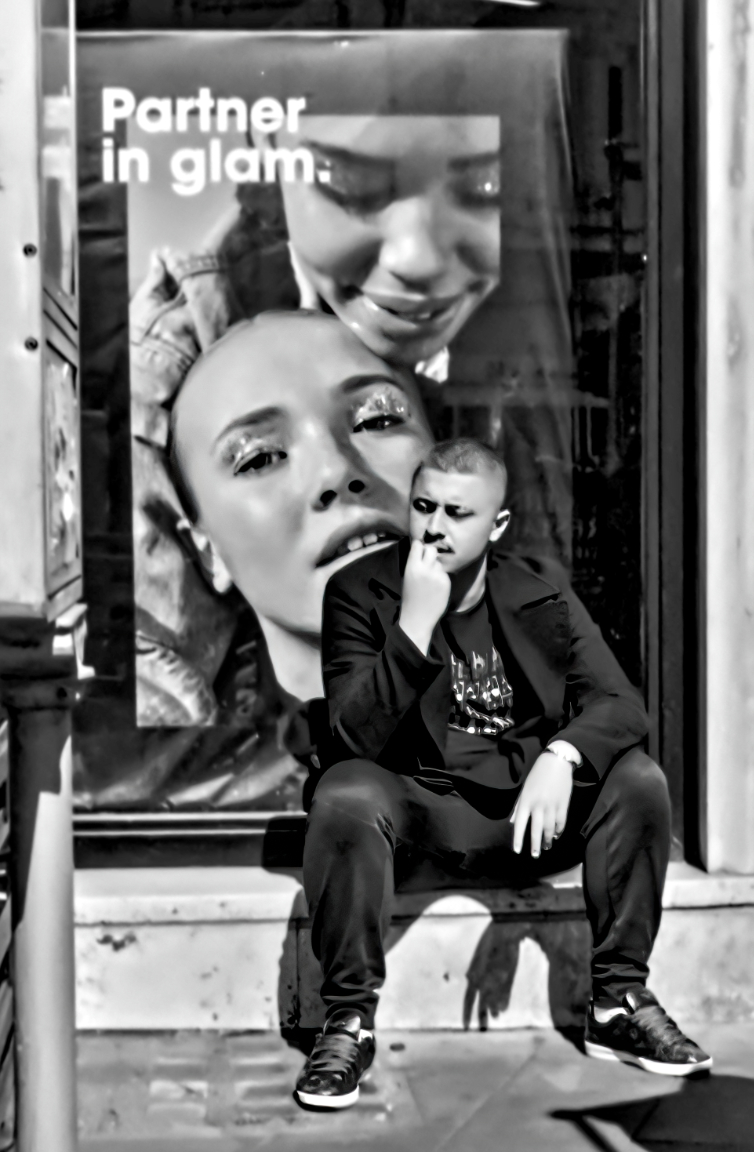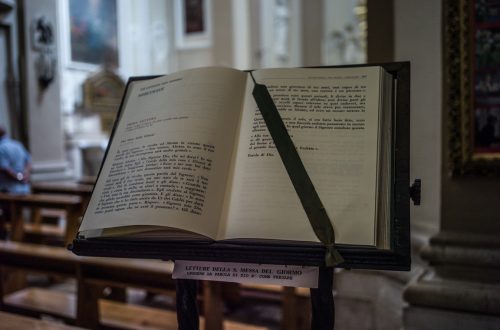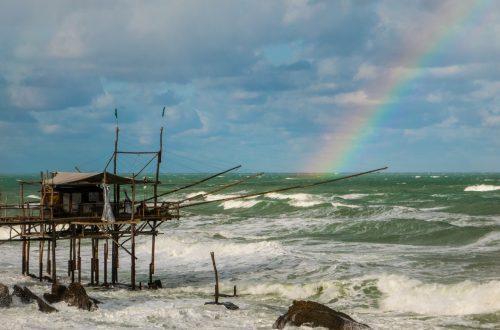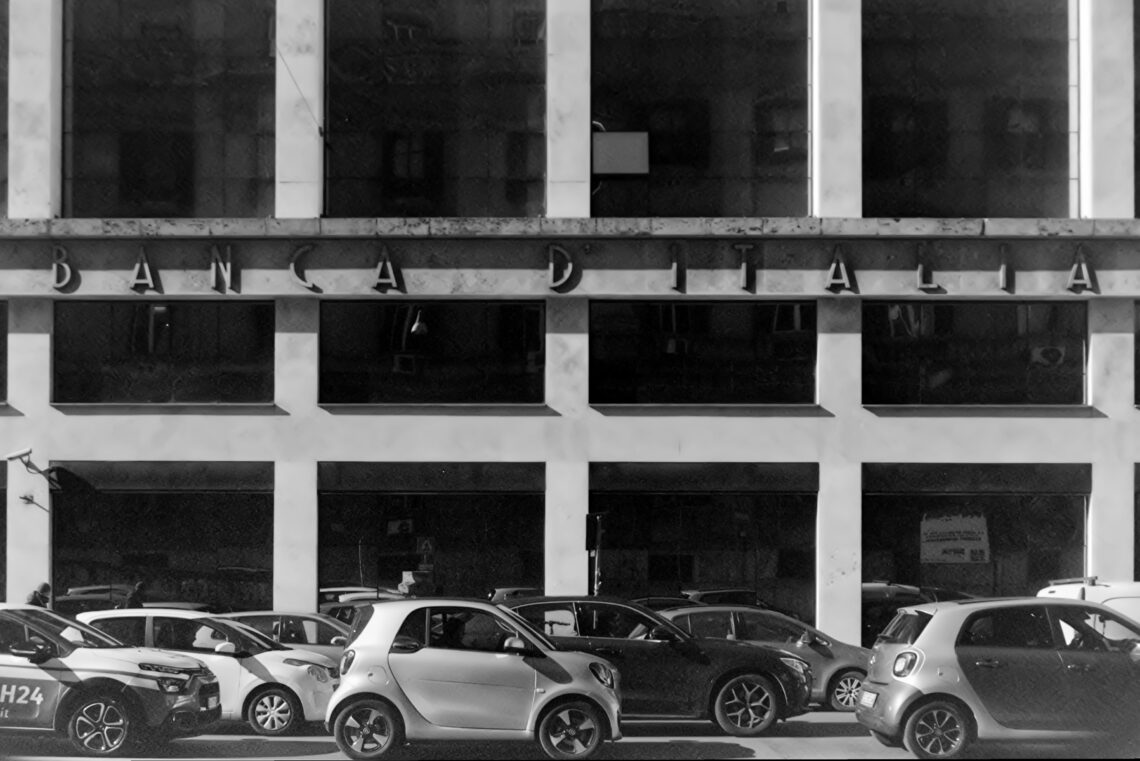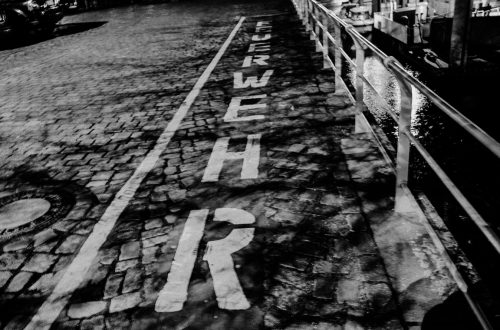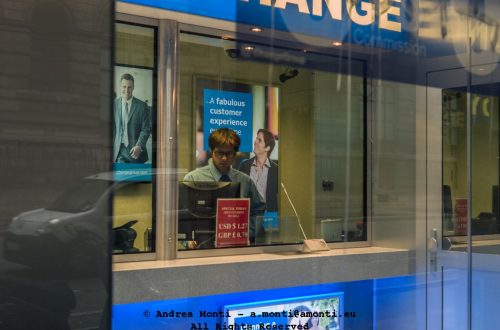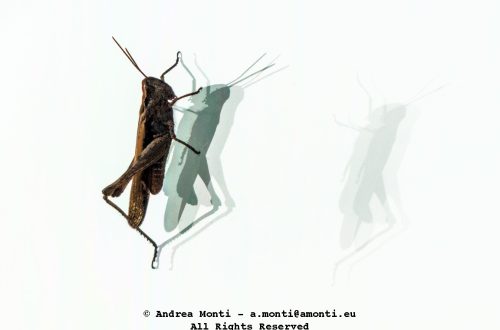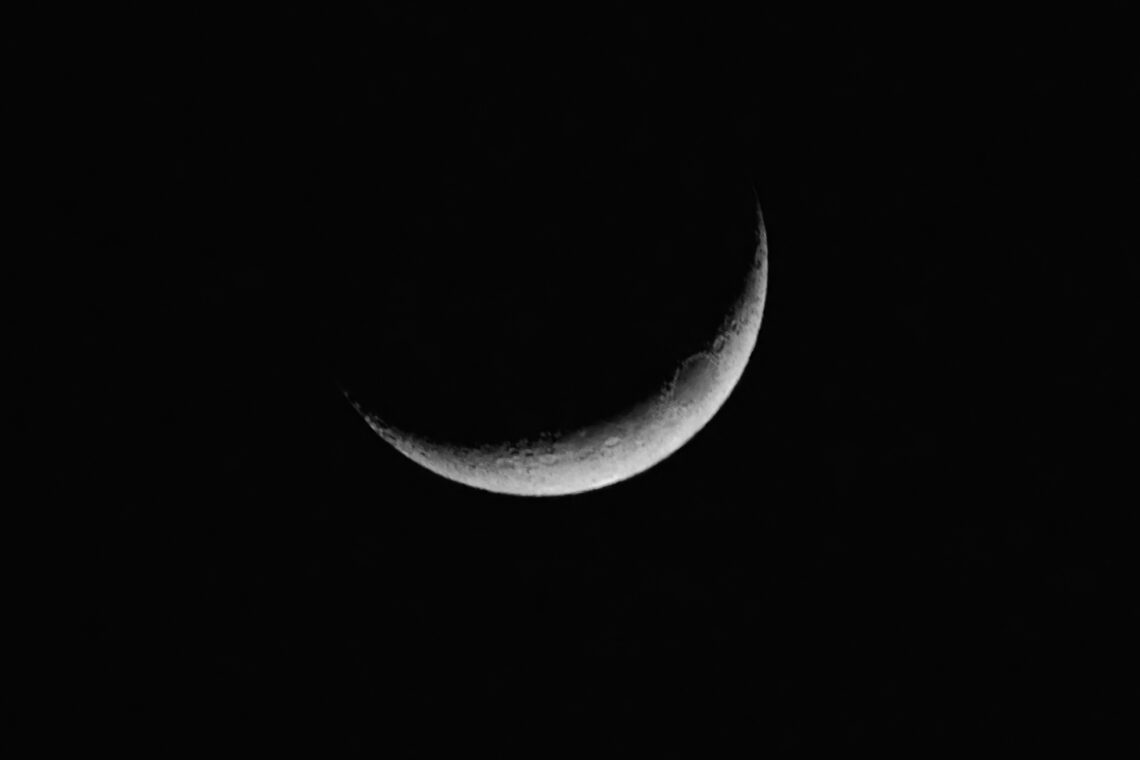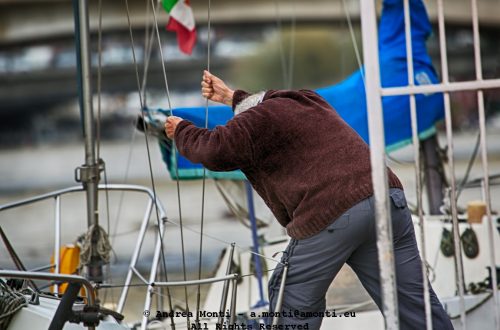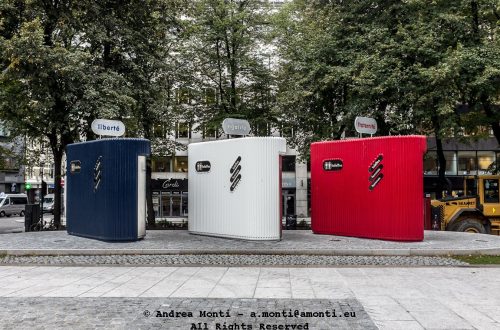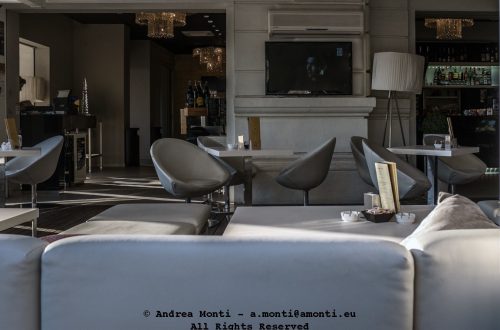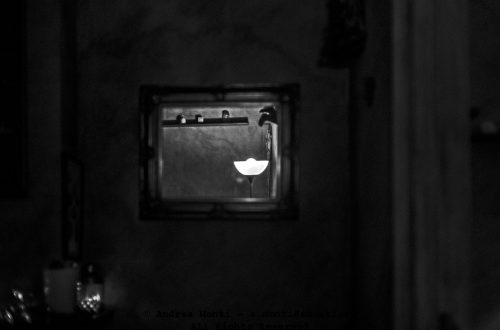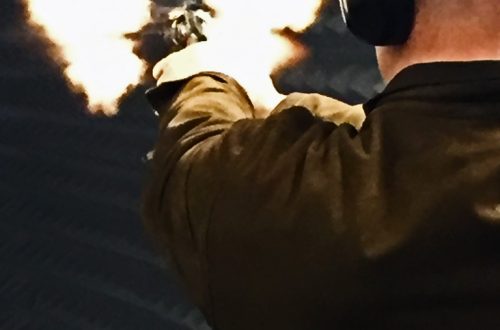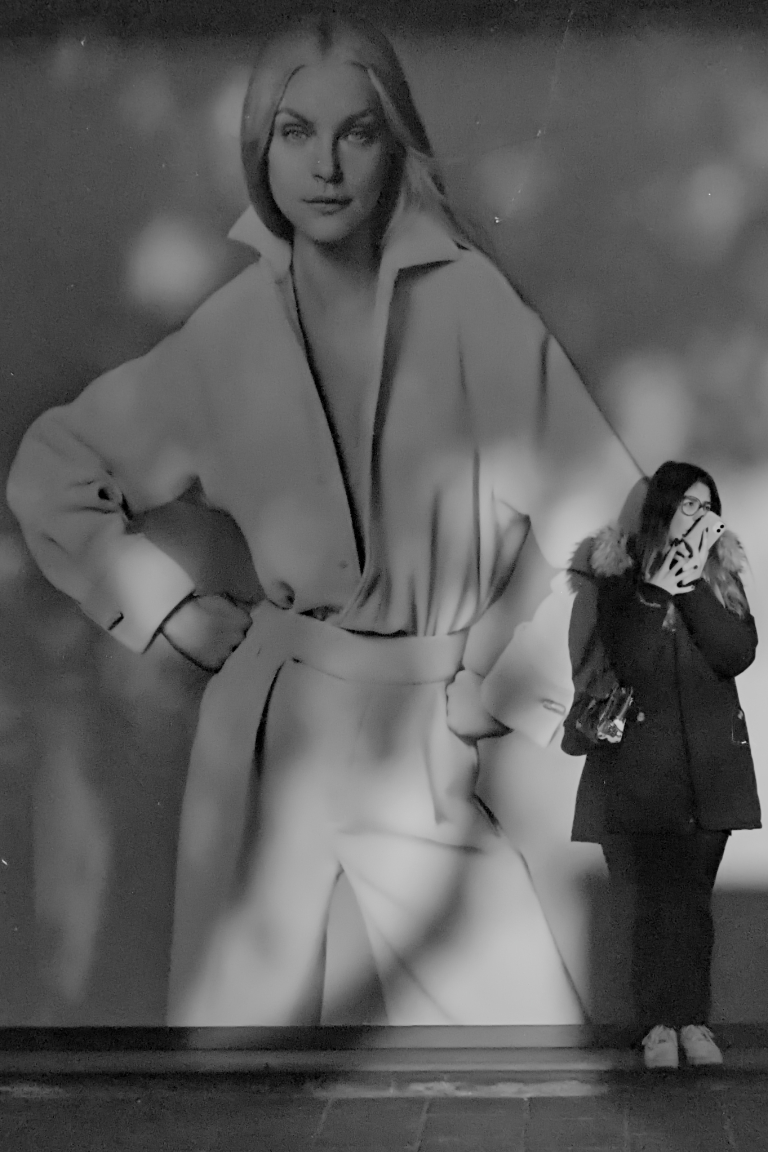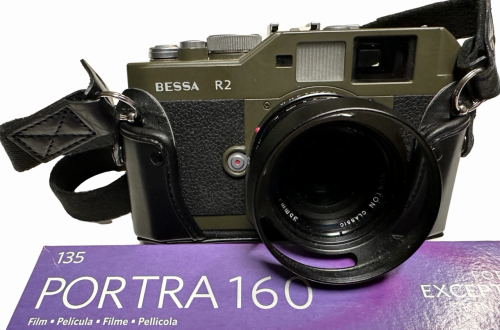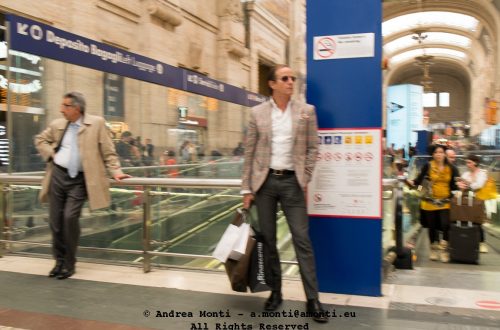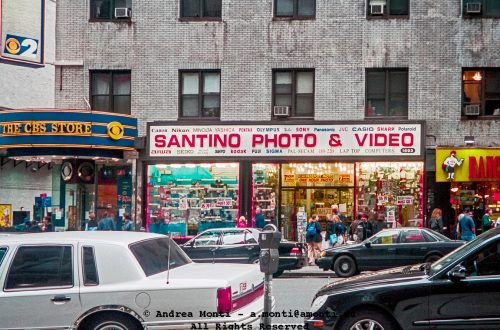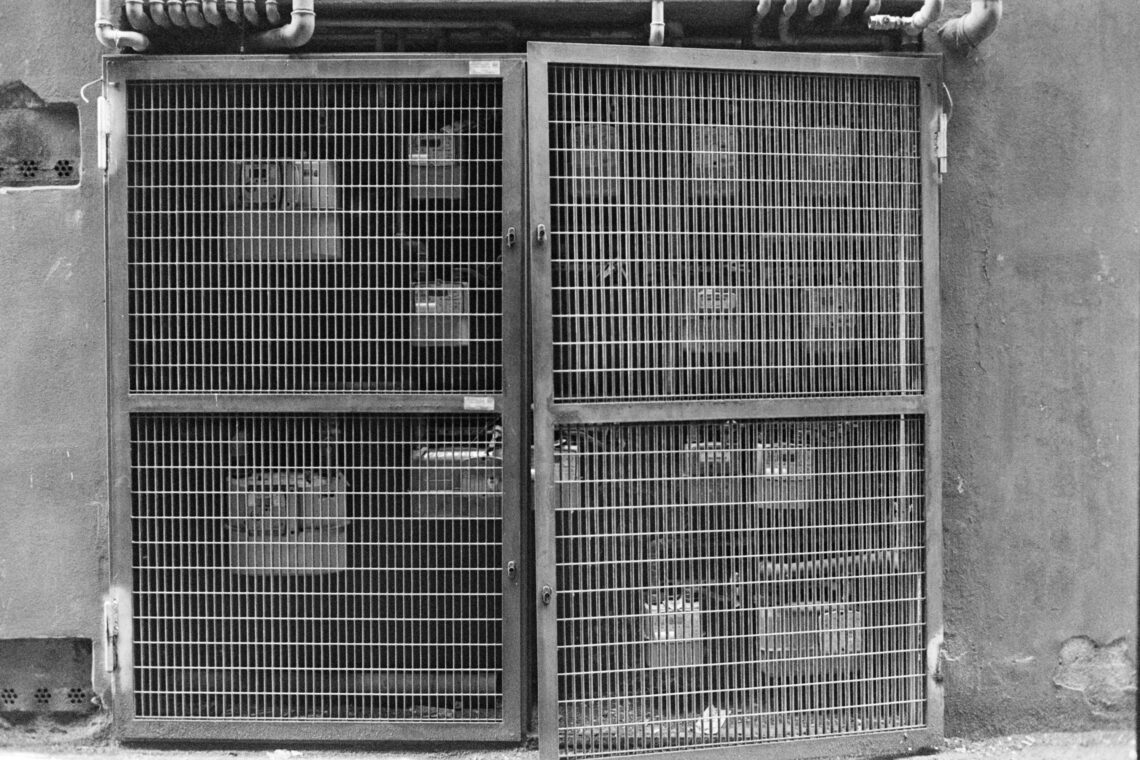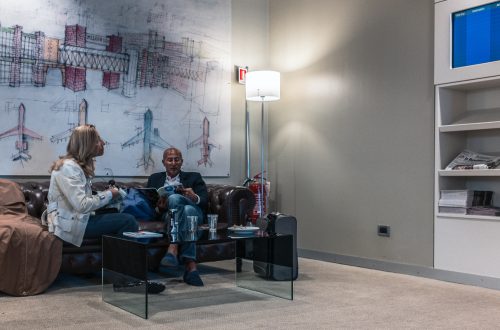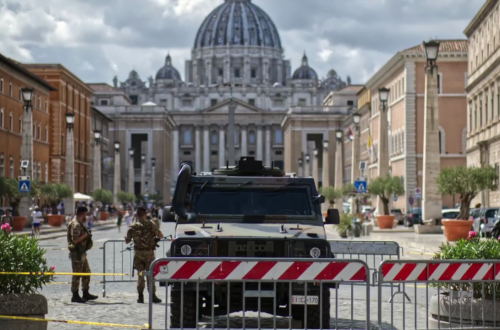-
UnortORTOdox (Ferrania)
This is an unorthodox use of an orthochromatic film (namely, Ferrania Orto.) It is not supposed to be the first choice for reportage or travel photography, but rules are made to be broken, aren’t they? As per the photo, it was taken in North End, Boston’s Little Italy.
-
The Expired Film Series – Episode 1 – Kodak BW400CN – Dec. 2014 shot in June 2023
This is the first episode in a series documenting the use of expired film in various contexts (mainly in Rome, Italy). Episode 1 features a Kodak BW400CN shot with a Nikon 35TI in Rome (IT), between Piazzale Flaminio and Piazza di Spagna where the world premiere of the latest Tom Cruise motion picture —Mission Impossible: Dead Reckoning— was going to be held. As the Nikon 35TI does not allow one to ‘pull’ film’s ISO and the exposure compensation did not work, it was impossible to overexpose the pictures. As a results, the blacks lack detail and show severe grain. Legal Notice Reuse is free for pro bono personal and educational…
-
Content Creators
There are many reasons for the lack of details in this image.The main one is that this roll of Kodak BW400CN expired about 15 years ago. Secondly, the Nikon 35TI used for the shot was set to ‘P’ mode, which does not allow ISO to be changed, and exposure compensation is broken: this made it impossible to use longer exposure times, as it would have been necessary.
-
Masters of Propaganda
In the heart of Rome, unbeknownst to the horde of tourists heading for Trinità dei Monti and the Fontana della Barcaccia, hidden in plain sight lies silent the headquarter of the Congregazione de propganda fide, the ante litteram master of modern propaganda.
-
Coffee at Caffè Nero
On the technical side, this photo was a test of the X-T5 capability to handle scenes with both strong highlights and shadows without increasing the standard dynamic range. As per the quality, despite the similarity of the name, definitely no, it has nothing ado with the ‘Nero’ one can taste in Trieste which —unbeknownst to many — is the Italian capital of coffee.
-
A Maserati GranTurismo
Another piece of Italy in Boston…
-
A Ferrari 812 GTS in Boston
Amid the urban thrum of a bustling boulevard in Boston, a Ferrari 812 GTS rests with theatrical poise, like a tenor waiting for the curtain to rise. Its rosso corsa bodywork catches the sun like a blade, slicing through the cluttered backdrop of imitation, of diluted Italian flair printed onto shirts, menus, slogans. But here—here is the real thing. This image captures more than automotive power. It embodies the burden and brilliance of authenticity in a world obsessed with mimicry. The Ferrari’s uncompromising lines, forged in Maranello, don’t shout. They assert. In contrast to the busy street and distracted passers-by, the car is still, composed, sovereign. It doesn’t need motion…
-
Justice measured as the distance between Words and Facts
This photo, in itself, is nothing special. Bur it carries an implicit message about law and rights: the level of democracy in a country is measured by the distance between bold statements and the daily courtroom’s reality.
-
A Cornhole Board – Independence Day Edition
I took this photograph in Boston on July 4th, and for me, it captures a small but telling fragment of the day’s celebrations. No fireworks, no parade—just a simple cornhole board dressed in the American flag, surrounded by scattered red and blue beanbags on a sunlit brick pavement. It’s an image that speaks to the quieter, more tactile traditions that sit alongside the grand spectacle. Compositionally, I let the board occupy the upper right of the frame, its diagonal placement adding a sense of movement and inviting the viewer’s eye from the legs toward the target hole. The wooden box in the foreground balances the frame and anchors the bottom…
-
Elishéva live@Faneuil Hall
Boston is an incredibly vibrant city and hosts many live events in theatres and outdoor venues. At Boston’s Faneuil Hall, I took some pictures of Elishéva, a soulful jazz singer, while she was rehearsing. Boston in summer has its own rhythm—a blend of footsteps, street chatter, and, if you’re lucky, the pulse of live music spilling into the air. I took this photograph during one of those moments when the city seems to pause and listen. The singer, shaded under her cap and oversized sunglasses, leans into the microphone with an intimacy that draws you in, while her guitarist locks eyes with her, an unspoken conversation carried through chords. From a…
-
Tesla Coils@Boston Science Museum
Capturing a Tesla coil mid-discharge is less about speed and more about timing. The arcs of electricity, chaotic and brief, demand an intuitive trigger finger and a dose of luck. I didn’t want the image to become a science illustration; I wanted it to hold some tension between spectacle and control, between the purity of mathematics and the danger of raw power. The coils themselves form a natural anchor in the bottom third of the frame, giving structure to what would otherwise be an abstract burst of energy. I shot through a safety mesh, letting it subtly ghost across the image, a reminder of the physical danger involved in what…
-
Helios 40-2 85/1,5 and Fuji X-T5: a sample
Shooting with the Helios 40-2 is always a slightly unpredictable experience, and that’s part of the charm. Mounted on the Fuji X-T5, the combination produces a character you simply don’t get from clinically perfect modern glass — here, the swirly background bokeh and slightly dreamlike rendering are as much a statement as the subject itself. This fishing boat sat in just the right light to make the most of the lens’ quirks. The midday sun was still high, harsh enough to create deep shadows but angled enough to give the hull and rigging a degree of texture. The exposure leaned toward protecting highlights on the water and white paint, which…
-
Guarding Democracy
Shot on film, this frame came from a day of walking — not searching, just watching. I didn’t need to look far. Two officers, positioned under a temporary gazebo, leaned into casual conversation, framed by the barricade they were meant to man. Beyond them, a crowd gathered in orderly concentration. The juxtaposition wasn’t loud, but it was clear: authority in the foreground, public in the distance. The separation was both literal and symbolic. The choice to shoot from behind the barrier wasn’t just compositional — it was contextual. I wanted to keep the divide intact. The vertical bars bisecting the two officers are rigid, unforgiving. They draw the eye down,…
-
FUJIFILM X-T5 RAF have problems with Affinity Photo 2.1
As this video shows, when opened in Affinity Photo 2.1, an RAF generated by a Fujifilm X-T5 shows a vertical stripe and a slightly higher resolution. The problem does not occur if the file is pre-processed with Iridient Transformer and converted to DNG, or if the file is processed with Pixelmator Pro 3, Lightroom Classic or the latest version of Capture One.
-
A pouch for the Fuji XF 150-600
The JJC Deluxe Lens Pouch model 811 fits perfectly with the Fuji XF 150-600 with the handle mounted and the lens hood reversd. It also leaves some room for filters, SD cards or small accessories.
-
Abstract
There’s a particular pleasure in encountering an image that resists immediate recognition. This photograph—an interplay of industrial forms, bolts, struts, and cylindrical elements—sits somewhere between documentation and abstraction. Strip away the context, and it becomes less about what these structures are and more about what they do visually: dividing the frame, catching light, and setting up a rhythm of repetition and interruption. The composition is rigidly symmetrical along the vertical axis, yet it doesn’t feel overly formal or sterile. The imperfections—paint chipping, scuffs, a touch of grime—are what give it character. These blemishes remind us this isn’t a CAD rendering but a real, weathered object, doing its job in the…
-
Niccolò Fabi – Meno Per Meno Tour 2023 – Live@Teatro Massimo, Pescara
Covering Niccolò Fabi’s concert for Rockol, gave me the opportunity to test an X-T4 with an XF 150-600. The image quality is on a par with the X-T3. This was to be expected. However, I have some reservations about the autofocus. The lens also needs to be examined in more detail before I can form an informed opinion.
-
Backstage, Before the Downbeat
Shot on Kodak Portra 400 with a Canon EOS 1V and the humble yet reliable 50mm f/1.8, this frame captures the unspoken moments before the music begins. No spectacle, no spotlight, just the quiet mechanics of musicianship. I focused on the baritone saxophonist, half-turned, reading the score with that blend of tension and calm that precedes performance. Portra’s muted tones did exactly what I hoped they would—warm but never too rich, soft on contrast without washing out the mood. Skin tones stay honest. Brass textures from the saxophone register with depth, neither overly polished nor artificially gritty. The background instruments bleed into shadows, helped by the lens wide open at…
-
Partner in Glam
I framed this shot fast — the kind of street moment that gives you three seconds to get it or lose it. What pulled me in wasn’t the man alone, nor the advert behind him. It was the convergence. His physical presence, heavy and brooding, intersecting perfectly with the oversized face of the model. Two expressions, one contemplative, one seductive, unintentionally in conversation. The poster reads Partner in glam. A marketing line, forgettable in most contexts. But set against this man, seated in shadow, caught mid-thought, it takes on irony. Or honesty. Depends how you read it. Technically, the photo leans hard into contrast. Shot in direct sunlight, the shadows…
-
Processing DSLR-digitized film with and without Pentax K-1 Monochrome Custom Image profile
Digital Camera Utility 5.0 is a pain to use on a Mac with Monterey. It is slow and laggy. Its only use is to get the photo as shot, with the custom image profiles embedded in a K-1 (and other recent Pentax DSLRs), and export it as a 16-bit tiff for further processing.One might wonder, however, whether editing a RAW file without going through the DCU —and thus losing the custom image profile— would produce lower quality results. We are about to find out.The test is quite demanding, as it starts with a shot from an Ilford SP2 Super 400 (note: this is not a true B&W film, as it…
-
Moonshot with a handheld Fuji XF150-600 and a Fuji X-T3
The moon doesn’t forgive technical sloppiness. Any softness in focus, hint of motion blur, or weakness in exposure shows up instantly. This crescent was taken handheld with the Fuji XF150-600 on an X-T3 — a combination that, on paper, might not seem ideal for lunar work without a tripod. Yet, that challenge was the point. The compression of 600mm brought the surface’s rugged texture into relief, and the X-T3’s sensor resolved the fine gradations between illuminated craters and the shadowed terminator with satisfying clarity. The key here was managing shutter speed — 1/1000s gave me enough to counteract handshake, but I kept the ISO just high enough to hold detail…
-
A Frame Within a Frame Within a Frame
The irony didn’t hit me until I developed the roll—an expired Ilford XP2 Super 400 that had been lounging at the bottom of a drawer for years. Shot with a Voigtländer Bessa R2 paired with the Nokton 35mm f/1.4, this image is as much a meditation on layers as it is a commentary on isolation. What initially looked like an ordinary street shot—girl on a call, perched on a windowsill—turned out to be a trifecta of enclosures: her physical pose wrapped in posture and winter clothing, set within the architecture of the window, itself encased in the framing of the building. Beyond, the city reflects itself, ghostlike, on the glass—another…
-
Coats
Getting rid of film noise is a recurring necessity when shooting film at (relatively) high ISO.In this photo the negative was digitised using a Pentax K-1 Mark I and a Pentax FA 100/2,8 Macro. Then, before inverting the curves to make a positive, it was fed into DxO PureRaw3 (by the way, it properly recognized the camera and lens). Finally, in Affinity Photo Develop Persona’s Details tab, once the curves were inverted, it was necessary to tweak the Noise Reduction options by setting Luminance to 50% and Luminance Details to 0.
-
Powermeters
This photo was taken with an Ilford XP2 Super 400, a Voigtländer Bessa R2 and a Voigtländer 35mm f/1.4 II lens. The film was digitised using a Pentax K-1 and a Pentax FA 100/2.8 Marco mounted on a custom-built rig. The resulting raw was processed in Affinity Photo. In Develop Persona, first the image was turned in black and white, then the master curve was intverted and finally exposure, contrast and other parameters were tweaked.
